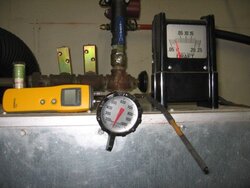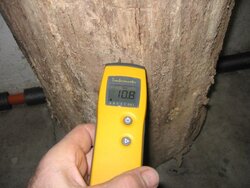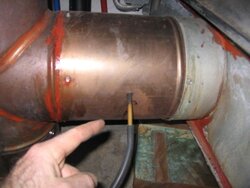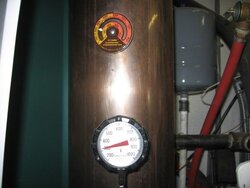I have had a Greenwood 100 running for about 2 months now. Does anyone out there have a problem with creosote with the Greenwood? I have all types; liquid, goo, crystallized, etc, emanating from mine, from the loading door, chimney outlet box, chimney, stuck on the water tubes, you name it; its there. I gave it a good cleaning the other day, there is about 3/4 inch solid creosote in the bottom of the chimeny outlet area. No way to get it out without removing the back end.
I have installed a draft inducer (linked to on their website), now I think I have a hotter fire and was hoping to eliminate the creosote, but no such luck. It drips out the bottom of the chimney, and runs down the damper door when it's closed.
I have tried for help from the factory, and in all fairness a gentleman did call back one day, we played telephone tag but he's been 'it' for awhile now but hasn't called back. So other than having a nice chat with Nancy, I can't get any info. Some questions I want to ask, the book says 6 in chimney Minimum. The exhaust outlet is 8 inch, my thimble is 8 inch, so I put in an 8 in chimney. Could this be my problem? And if it is, and I'm not getting enough draft, wouldn't the draft inducer fix it? Would the extra chimney size increase or decrease the draft? I have about 6 ft of 8 inch black pipe with 2 ninties into an 8 inch thimble into a 7X11 masonary chimney inside the house.
One last question, if I purchase a draft meter, which is the best one and where can I get it?
Thanks for any help, this site is a wealth of info.


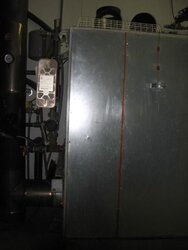
 with a new paint job, she's gonna be yellow now, but if it gets burnt I'll be ticked off. When loading mine, you hit the "stop" button, get a "green" light to open loading door, in theory that was to prevent a "smoke out" or flame out the door. The scenario worked somewhat, I've learned over the years to crack the door slowly, let the fire suck in some air and flame/smoke will stay put, (for a little while). But sometimes I'm too impatient or just not thinking and I get it to billow a bit.
with a new paint job, she's gonna be yellow now, but if it gets burnt I'll be ticked off. When loading mine, you hit the "stop" button, get a "green" light to open loading door, in theory that was to prevent a "smoke out" or flame out the door. The scenario worked somewhat, I've learned over the years to crack the door slowly, let the fire suck in some air and flame/smoke will stay put, (for a little while). But sometimes I'm too impatient or just not thinking and I get it to billow a bit. :lol:
:lol: